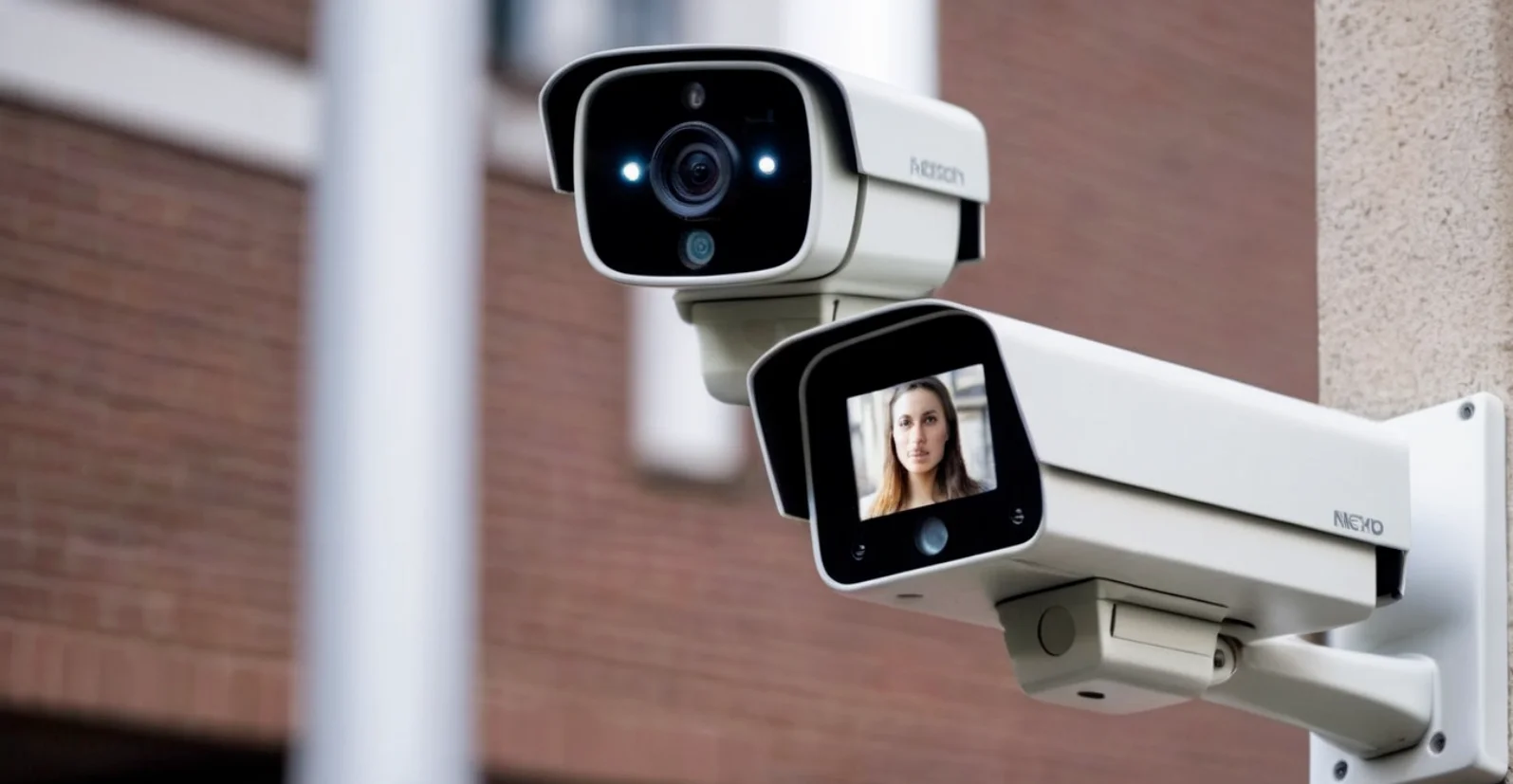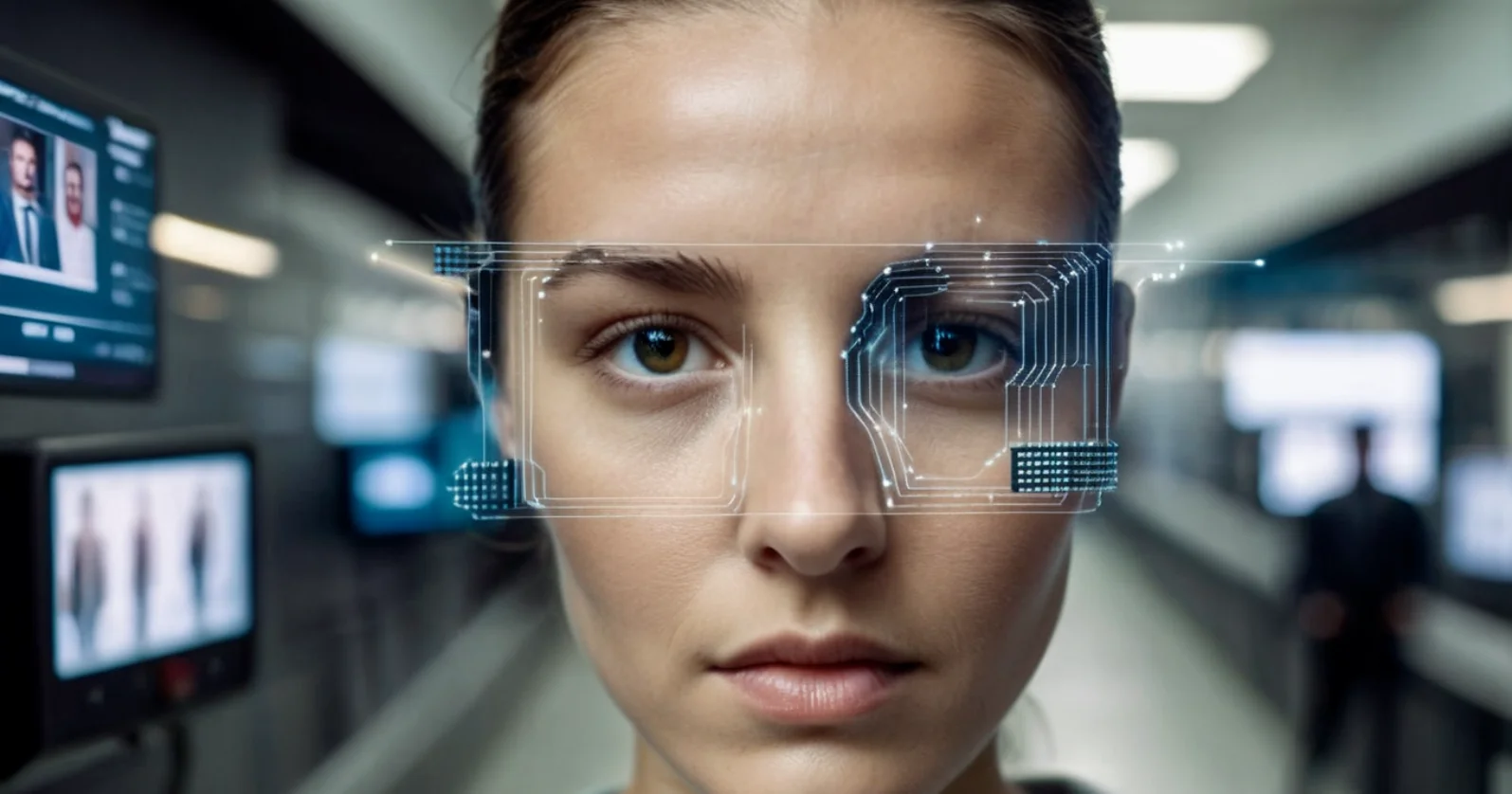Facial recognition technology is revolutionizing video surveillance and security systems. Also known as face recognition, this biometric technology enables security cameras to identify and verify people by analyzing and matching facial features against a stored database. Facial recognition security cameras provide enhanced monitoring and access control abilities for diverse applications.
In this comprehensive guide, we’ll cover everything you need to know about this powerful video surveillance technology and how it can enhance security and business operations.
How Facial Recognition Security Cameras Work
Facial recognition security cameras utilize advanced computer vision and deep learning artificial intelligence (AI) to analyze and recognize human faces. The camera scans the field of view and employs algorithms to detect human faces, even in low light conditions and from different angles.
Once a face is detected, the facial recognition software extracts unique facial data based on the geometry of the person’s eyes, nose, mouth, cheeks, and overall head shape. This biometric facial data is compared to stored facial profiles in a database to identify matches and verify the person’s identity.
Facial images of authorized individuals are pre-enrolled into the system to build the facial database. The sophisticated facial recognition algorithm processes these images to create a unique biometric template for each person.
When the camera sees a face, it uses a 1:1 matching process to compare it against the biometric template of the claimed identity. Alternatively, 1:N matching can compare the face against all stored templates to identify an unknown person. With advanced AI training, today’s facial recognition systems can achieve over 99% accuracy under optimal conditions.
Key Benefits and Use Cases
With its ability to automatically identify authorized individuals, facial recognition security cameras provide value across many settings:
In the workplace, the cameras can verify employees and control access to restricted areas without security badges. For customer service, facial recognition allows staff to recognize important visitors by face. In private residences, homeowners can monitor cleaning staff and receive custom alerts when specific faces are recognized. Retailers can analyze store traffic demographics to optimize merchandising.

Accuracy and Limitations
Recent breakthroughs in neural networks and machine learning have brought facial recognition technology to impressive accuracy levels. However, performance depends heavily on image quality, lighting, facial obstructions, variations in appearance, database size, and other factors. Algorithms also historically struggled with accuracy across races, though new training data has helped improve this.
Most facial recognition security cameras achieve over 95% accuracy given high resolution footage in controlled indoor environments. Multimodal systems that incorporate fingerprint and iris biometrics in addition to facial recognition achieve even higher accuracy. While current limitations exist, facial recognition performance continues to advance through better camera hardware, computer vision techniques, and neural network training.
Key Features and Considerations

- Facial recognition algorithm – Assess proprietary vs. open source options, as well as whether the system uses AI chips for on-device processing.
- Accuracy rate – Match rates will vary based on conditions and database size.
- Camera image quality and low light capabilities. Higher 4K resolution performs best.
- Facial capacity – Number of faces the system can store and process.
- Detection distance – 15-50 ft is typical.
- Processing speed – Real time is ideal.
- Data security measures – Encryption and cybersecurity protections are critical.
- Storage options – Local, external and cloud storage capabilities
- Smart alert capabilities when specific faces are recognized.
- Access control integration – Open API and integration capabilities.
- Mobile access to the facial recognition data and alerts.
- Customer support and warranty coverage.
Optimal facial recognition requires high quality cameras backed by accurate AI algorithms that integrate with existing access control infrastructure.
Installation Best Practices
Proper installation and calibration is key to realizing the full potential of a facial recognition security camera system. Experts recommend:
- Mounting cameras at 7-12 ft high for ideal angling on faces.
- Ensuring cameras have an unobstructed frontal view to capture details.
- Adjusting pan and tilt to cover high-traffic areas.
- Using uniform lighting without shadows or supplementing with IR lighting for 24/7 facial capture.
- Enrolling multiple quality reference images per person.
- Positioning cameras no more than 50 ft away for optimal facial detail.
- Setting a minimum face pixel size, generally 50×50 pixels.
- Assessing night vision capabilities for low light facial recognition.
- Fine tuning settings to minimize false positives and false negatives.
- Integrating the system with access control infrastructure for streamlined authentication.
With strategic placement, configuration and calibration, today’s most advanced facial recognition security cameras can provide remarkably fast and accurate biometric identification to enhance security and workplace automation.
The Future of Facial Recognition Security Cameras
While privacy concerns exist around law enforcement applications, facial recognition security cameras offer significant value for authorized workplace security and access control when deployed ethically. With continued improvements in accuracy thanks to AI advancement, facial recognition is poised to play an expanding role securing facilities, optimizing operations, and automating workflows. Still a nascent technology, our abilities to apply facial recognition safely will continue maturing alongside the technology itself.
